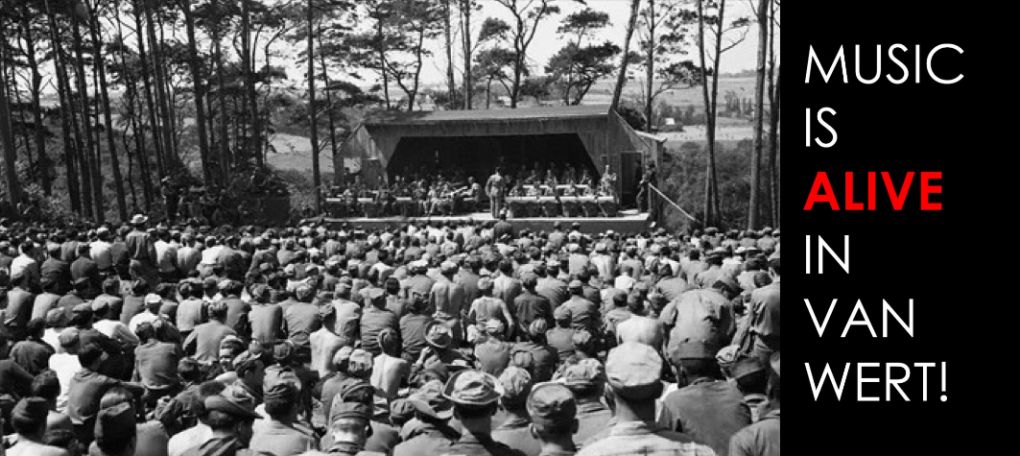
MUSIC IS ALIVE IN VAN WERT! This One's For You!
This One's For You.
By Tafi Stober
America means freedom and there's no expression of freedom quite so sincere as music. - Glenn Miller
Who's a fan of the Big Band? Sometime in the 1930's big bands began playing songs composed and performed to instantly get you moving. America's emergence from the Great Depression was set to the gait and swelling energy of the Big Band sound. The music was composed to elicit response from the listener. Much of the music of the era was specifically composed for a dancing audience. The response was to either jump up and dance or simply to tap toes to the beat. Big band songs energized the soul of America and delivered many of the most memorable tunes in music history.
Famous musicians like Glenn Miller, Cab Calloway, and Benny Goodman each had a first-rate orchestra that added to their performances. The result? A huge wall of sound that inspired the very name "big band." Big bands started as accompaniment for dancing. In contrast to the typical jazz emphasis on improvisation, big bands relied on written compositions and arrangements. They gave a greater role to bandleaders, arrangers, and sections of instruments rather than soloists.
Big Bands uplifted morale during World War II. Many musicians served in the military and toured with USO troupes at the front. Glenn Miller was one such musician. Alton Glenn Miller was an American big-band trombonist, arranger, composer, and bandleader in the swing era. He was the best-selling recording artist from 1939 to 1943, leading one of the best-known big bands. Miller's recordings include "In the Mood," "Moonlight Serenade," "Pennsylvania 6-5000," "Chattanooga Choo Choo," "A String of Pearls," "At Last," "(I've Got a Gal In) Kalamazoo", "American Patrol," "Tuxedo Junction," "Elmer's Tune," and "Little Brown Jug." In just four years Glenn Miller scored 16 number-one records and 69 top ten hits—more than Elvis Presley (38 top 10s) and the Beatles (33 top 10s) did in their careers.
In 1942 at the peak of his popularity, Glenn persuaded the United States Army to accept him so he could, in his own words, "be placed in charge of a modernized Army band." Sadly in 1944, while he was traveling to entertain U.S. troops in France during World War II, Miller's aircraft disappeared in bad weather over the English Channel. His untimely death made way for a legacy of music that continues to this day.
After Miller's disappearance, the Miller-led Army Air Force band was decommissioned and sent back to the United States but another band was commissioned to take its place, and that's when the 314 was formed. According to singer Tony Bennett, who sang with it while in the service, the 314 was the immediate successor to the Glenn Miller led AAF orchestra. The Glenn Miller Army Air Force Band's long-term legacy has carried on with the Airmen of Note, a band within the United States Air Force Band. This band was created in 1950 from smaller groups within the Bolling Air Force Base in Washington, D.C., and continues to play jazz music for the Air Force community and the general public. Today, most branches of the American military, in addition to concert and marching bands, have jazz orchestras, combos and even groups playing rock, country and bluegrass. All that can be tracked to Miller's original Army Air Force band.
And here we are today in Van Wert, Ohio, soon to be entertained by SHADES OF BLUE, The United States Air Force Jazz Ensemble. This one's for you! On Monday, September 9 at 7:00 P at the Niswonger Performing Arts Center, a different generation of military musicians will take us back to the days of the Big Band Era with a swinging Glenn Miller Band Tribute. There will be toe tapping and hand clapping as the 18-piece orchestra pays tribute to the Father of modern military music. No need to worry about a dance floor. The aisles will work just fine.